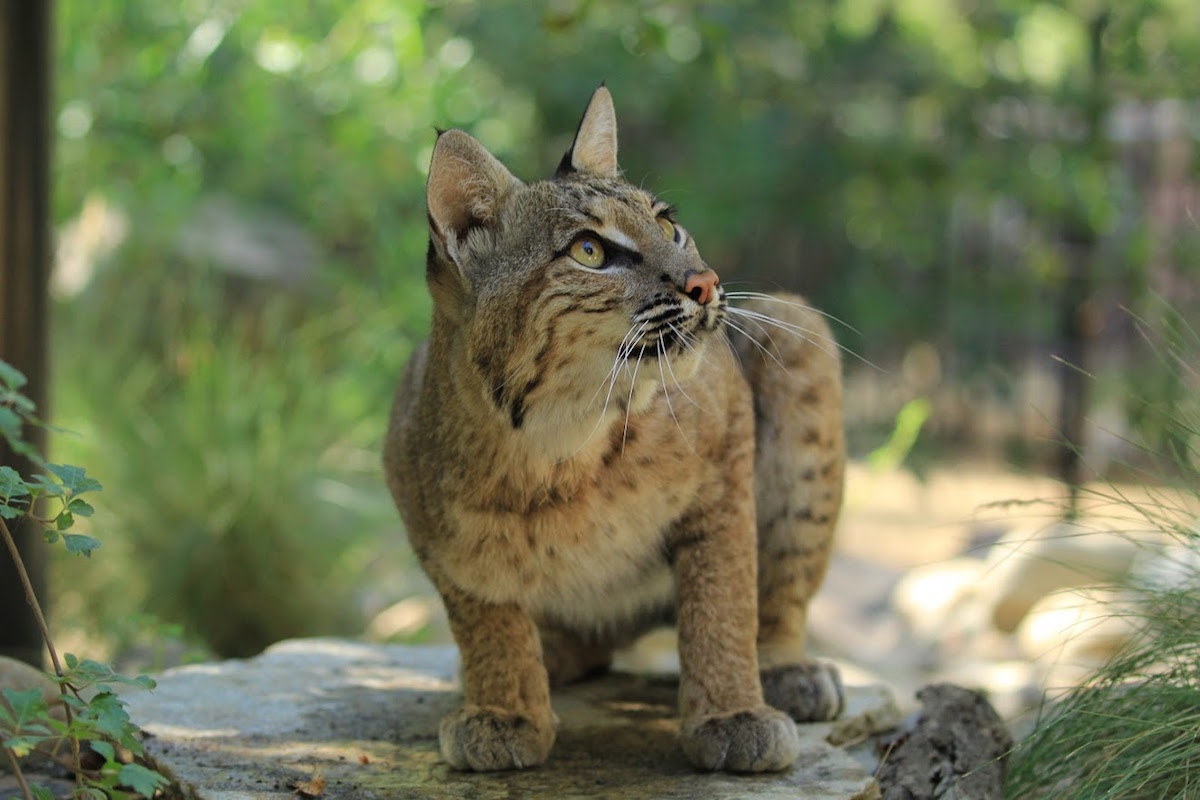Bobcats
Family: Felidae; Genus: Lynx; Species: rufus
Range: Southern Canada thru Mexico. There is a pocket in the Midwest where it is thought to no longer exist because of habitat changes due to agricultural practices.
Habitat: Prefers woodlands, but is very adaptable and can be found in all kinds of habitats from mountainous areas to semi-deserts.
Diet: Mainly rabbits and hares, mice, squirrels, birds and smaller game.
Lifespan: 10-12 years in the wild, up to 30 in captivity.
Whisper
Whisper was found near an oil rigger in Kansas. The workers who found her placed her in the nearest woods, hoping the mother would come back, but the next morning she was back at the oil rigger. She was only a week old. Kansas law says to euthanize, but the local zoo saved her and sent her to us so we could use her as an ambassador for her species in our educational programs. Whisper is generously supported by Adopt-An-Animal donors: eter Cates, Ann Mamer
Interested in the Adopt-An-Animal program? Click link below.
FUN FACTS
Bobcats are named for their “bobbed” tail.
Bobcats are crepuscular and very elusive so people rarely see them. They are very stealthy while hunting, which is why we named our bobcat, Whisper. In fact, bobcats have been known to take 15 minutes just to move 3 feet!
They are great at jumping and can clear a 6ft fence without touching it!
They have false eyespots on the back of their ears, making the bobcat seem bigger and watchful to a potential predator attacking from the rear.
Big, furry feet help to disperse their weight and muffle their sound, allowing them to walk almost silently, aiding in their stealth.
The bobcat is the most abundant wildcat in the U.S. and has the greatest range of all native North American cats.
It is about 3x the size of a housecat. Weight ranges from 11-30lbs.
They are solitary and territorial animals. Kittens stay with their mother up to a year before they are evicted.
Differences between bobcat and lynx:
Geography- lynx are northern dwelling, mainly Canada and northern US states. Bobcats are much more widespread
Specialist vs generalist- Lynx prey mainly on snowshoe hare while the bobcat takes advantage of all types of small prey
Size- Lynx are larger with longer legs and bigger feet, acting like snowshoes to help them navigate through their often snowy habitat.
Appearance- Lynx have longer ear tufts and their tails lack banding and are completely black at the tip. Bobcats tails are banded and are black on the top of the tip and white on the bottom.



